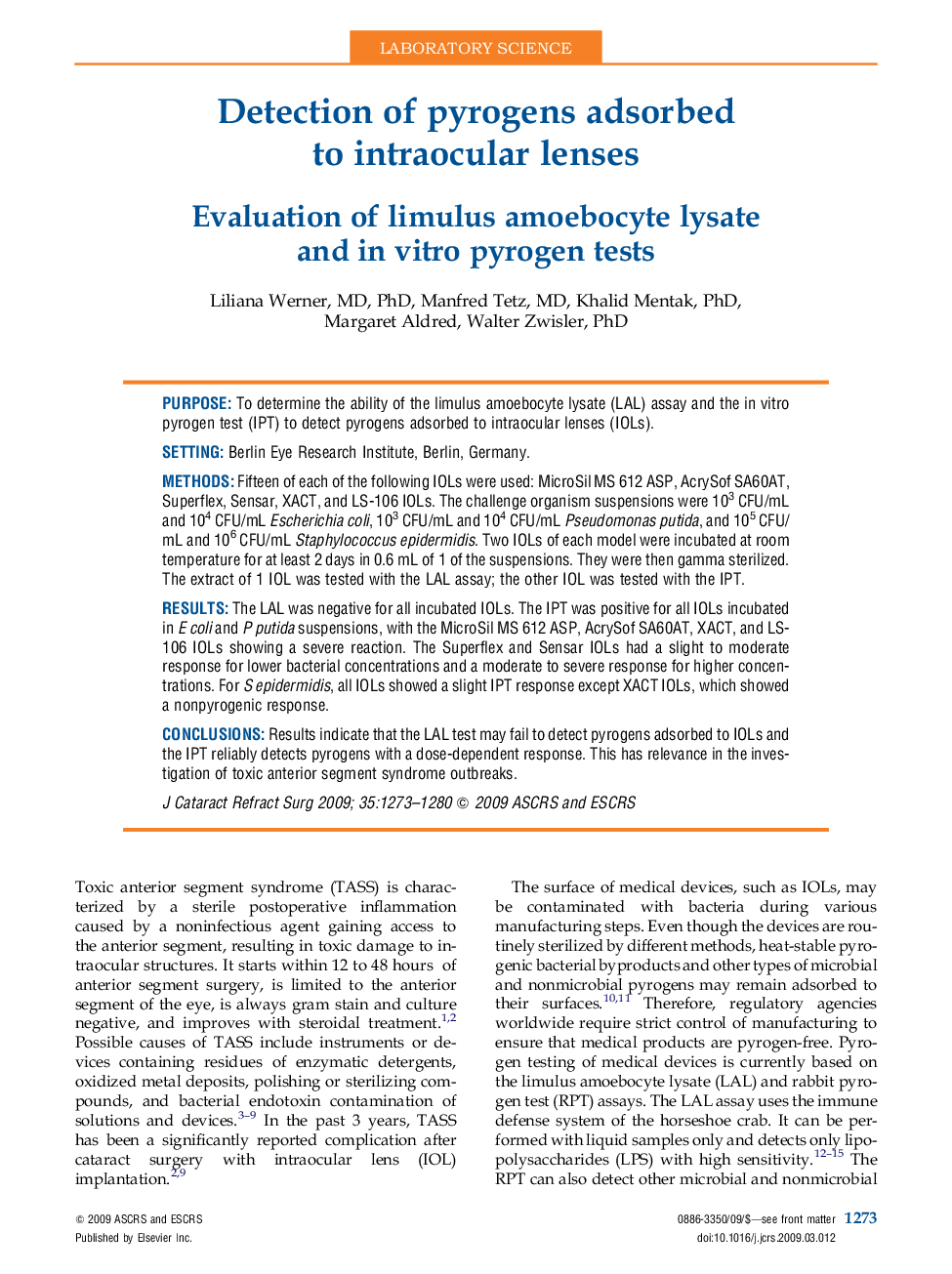| کد مقاله | کد نشریه | سال انتشار | مقاله انگلیسی | نسخه تمام متن |
|---|---|---|---|---|
| 4018030 | 1261989 | 2009 | 8 صفحه PDF | دانلود رایگان |

PurposeTo determine the ability of the limulus amoebocyte lysate (LAL) assay and the in vitro pyrogen test (IPT) to detect pyrogens adsorbed to intraocular lenses (IOLs).SettingBerlin Eye Research Institute, Berlin, Germany.MethodsFifteen of each of the following IOLs were used: MicroSil MS 612 ASP, AcrySof SA60AT, Superflex, Sensar, XACT, and LS-106 IOLs. The challenge organism suspensions were 103 CFU/mL and 104 CFU/mL Escherichia coli, 103 CFU/mL and 104 CFU/mL Pseudomonas putida, and 105 CFU/mL and 106 CFU/mL Staphylococcus epidermidis. Two IOLs of each model were incubated at room temperature for at least 2 days in 0.6 mL of 1 of the suspensions. They were then gamma sterilized. The extract of 1 IOL was tested with the LAL assay; the other IOL was tested with the IPT.ResultsThe LAL was negative for all incubated IOLs. The IPT was positive for all IOLs incubated in E coli and P putida suspensions, with the MicroSil MS 612 ASP, AcrySof SA60AT, XACT, and LS-106 IOLs showing a severe reaction. The Superflex and Sensar IOLs had a slight to moderate response for lower bacterial concentrations and a moderate to severe response for higher concentrations. For S epidermidis, all IOLs showed a slight IPT response except XACT IOLs, which showed a nonpyrogenic response.ConclusionsResults indicate that the LAL test may fail to detect pyrogens adsorbed to IOLs and the IPT reliably detects pyrogens with a dose-dependent response. This has relevance in the investigation of toxic anterior segment syndrome outbreaks.
Journal: Journal of Cataract & Refractive Surgery - Volume 35, Issue 7, July 2009, Pages 1273–1280